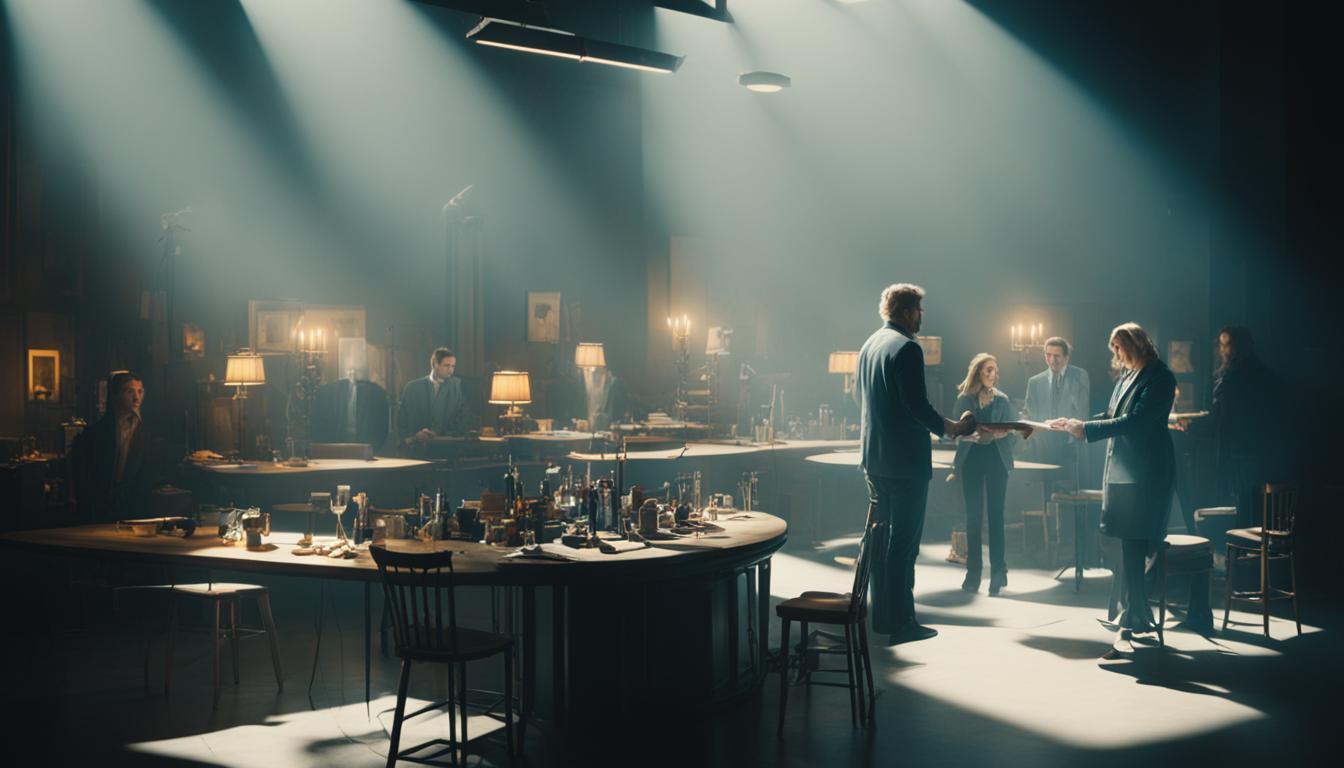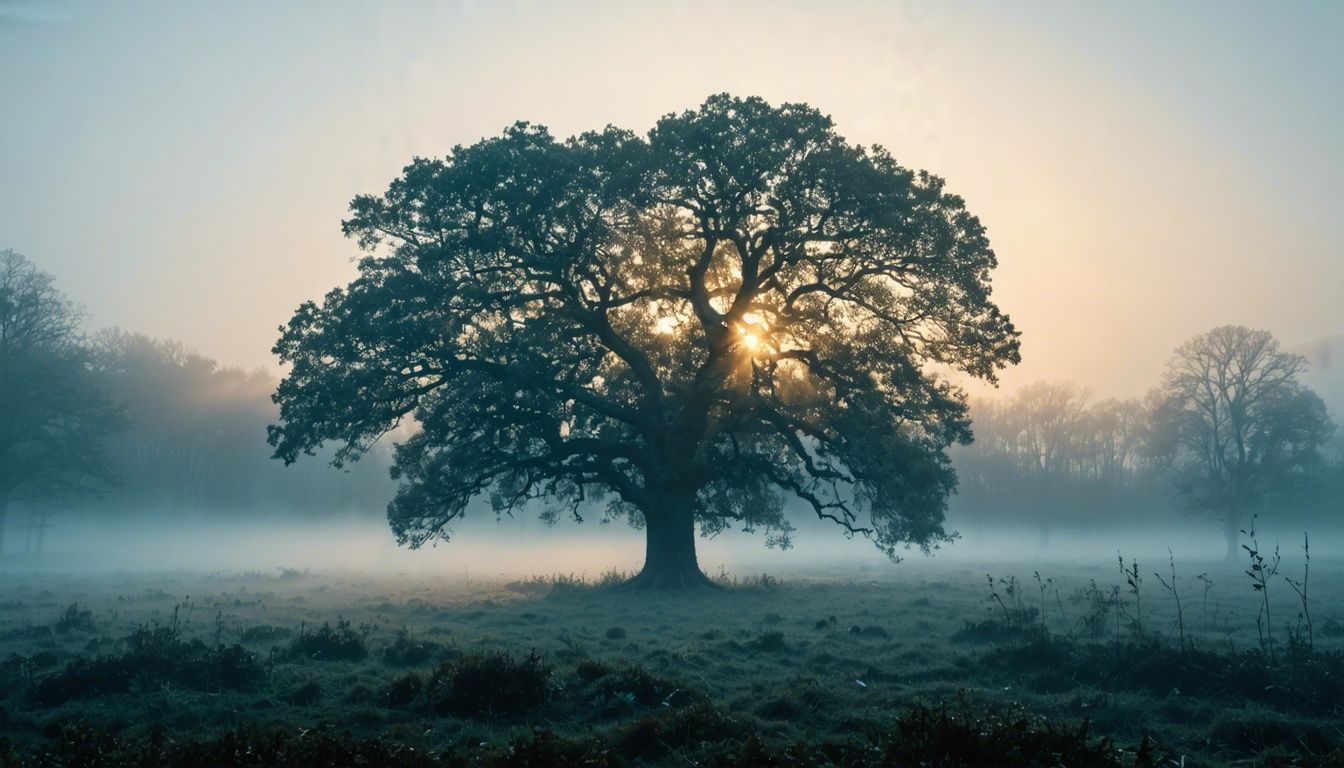Welcome to our guide on artistic image mastery! In this article, we will explore the crucial role that lighting plays in creating captivating and impactful images. Whether you’re a professional photographer or an aspiring enthusiast, understanding lighting techniques is essential for taking your creative photography to the next level.
We all know that photography is the art of capturing light. And when it comes to creating artistic images, lighting techniques can make or break the final result. The way light interacts with your subject has the power to evoke emotions, tell stories, and enhance the overall mood of the photograph.
By mastering the art of lighting, you can transform a simple portrait into a visually stunning masterpiece. From controlling the intensity and direction of light to manipulating shadows and highlights, creative photography lighting allows you to add depth, drama, and intrigue to your images.
- Understanding lighting techniques is crucial for creating visually stunning and emotionally impactful images.
- Lighting techniques allow you to evoke emotions, tell stories, and enhance the mood of your photographs.
- Mastering the art of lighting enables you to add depth, drama, and intrigue to your images.
- Control the intensity and direction of light to manipulate shadows and highlights.
- Creative photography lighting is a skill that can elevate your portraits to the level of masterpieces.
Understanding Basic Tools
When diving into the world of dramatic portraiture, we must have a solid grasp of the basic tools and techniques. One essential aspect is understanding the difference between hard light and soft light.
Hard light refers to direct, intense light that creates strong shadows and sharp contrasts. It is typically produced by a small light source or when light travels straight from the source without diffusing. This lighting technique can add a sense of drama, create bold shapes, and accentuate textures in a photograph.
On the other hand, soft light is diffused, producing a gentle and more even illumination. This type of lighting is achieved with larger light sources or by bouncing light off reflective surfaces. Soft light minimizes harsh shadows and produces a more flattering effect, making it ideal for portrait photography.
Beyond understanding the technical differences between hard and soft light, it is also vital to recognize how human perception impacts the way we interpret a photograph. Our brains automatically process visual stimuli, and various factors influence our attention and engagement with an image.
The focal point, or main subject of the photograph, immediately draws the viewer’s attention. Brightness, contrast, and color saturation also play key roles in capturing the viewer’s interest.
The presence of human faces in an image naturally grabs attention and evokes emotion in viewers. The facial expressions, body language, and overall mood communicated by the subjects can significantly impact how the photograph is perceived.
Patterns and breaks in patterns can create visual interest, guiding the viewer’s eye through the composition. Understanding how these visual elements interact allows photographers to create impactful and engaging portraits.
By understanding the difference between hard light and soft light and how human perception influences our interpretation of photographs, we can use these tools to create visually compelling and emotionally impactful portraits. The next section will delve into the technical aspects of lighting and explore how to shape and manipulate light to achieve desired effects.
Technical Aspects of Lighting
Creating a dramatic portrait involves harnessing various lighting techniques to evoke the desired emotions and stories. Understanding the behavior of light and the difference between hard light and soft light are fundamental in shaping and manipulating light to achieve the desired effects.
Hard Light vs. Soft Light:
- Hard light produces strong, defined shadows with high contrast, emphasizing texture and shape.
- Soft light creates more diffuse shadows with gentle transitions, producing a more flattering and gentle effect.
Manipulating Light:
“Light can be sculpted just like clay.”
– John Hartray
Shaping and manipulating light allows photographers to transform the subject and create a unique atmosphere. By positioning and modifying light sources, photographers can enhance the desired mood and highlight specific elements.
Creative Lighting:
“Creativity is the way we share our soul with the world.”
– Brené Brown
Creative lighting plays a crucial role in elevating the overall impact of a dramatic portrait. It involves exploring unconventional lighting techniques, experimenting with color gels, and using props or natural elements to add depth and interest.
Using a Light Meter:
A light meter is a valuable tool for achieving precise lighting settings. It measures the intensity of light, helping photographers determine the optimal exposure and ensure consistency in their lighting setups.

| Lighting Technique | Description |
|---|---|
| Rembrandt Lighting | A classic technique that creates a triangle of light on one side of the subject’s face, adding depth and dimension. |
| Butterfly Lighting | The lighting source is placed directly in front of the subject, slightly above eye level, creating a small butterfly-shaped shadow under the nose. |
| Rim Lighting | Backlighting the subject, often creating a halo effect, separates the subject from the background and adds a sense of drama. |
Progressive Shoots
Progressive shoots offer us the perfect opportunity to explore and experiment with various lighting techniques in portraiture. It’s an exciting journey where we start with simple single light setups and gradually progress to more complex arrangements. As we advance, we learn to shape light to match the purpose and narrative of each shot, ensuring our photographs are impactful and meaningful.
One of the key aspects we focus on during progressive shoots is narrative and storytelling. Lighting plays a crucial role in accentuating the emotions and stories we want to convey through our images. By understanding how to manipulate light effectively, we can create visually striking portraits that captivate viewers and leave a lasting impression.
Shaping Light for Narrative Impact
When it comes to narrative and storytelling in photography, lighting setups play a vital role. Each shot we capture tells a story, and the lighting techniques we choose can enhance or detract from the overall impact. We carefully consider lighting angles, intensity, and contrast to direct the viewer’s attention toward the focal point and evoke the desired emotions.
“Understanding the role of lighting in narrative photography is like learning a new language. It’s through proper lighting techniques that we craft visual sentences, paragraphs, and chapters that tell compelling stories in every frame.” – [Photographer Name]
Throughout the progressive shoots, we pay close attention to the interplay between light and shadow. The choice between hard light and soft light can dramatically affect the mood and atmosphere of the image. We experiment with lighting modifiers, such as diffusers and reflectors, to shape and control the quality of light, creating the desired effect for each shot.
The Importance of Directing Attention
Another crucial aspect we emphasize in progressive shoots is directing the viewer’s attention. By strategically illuminating certain areas of the frame while keeping others in shadows, we guide the viewer’s gaze and create a visual hierarchy that enhances the narrative. Lighting setups that complement the subject and scene help build a connection between the viewer and the photograph, inviting them to explore the story within the image.
As we progress through different lighting setups and techniques, we gain a deeper understanding of how light not only illuminates our subjects but also contributes to the overall visual and emotional impact of our photographs. By consciously shaping and manipulating light, we can elevate our storytelling abilities and create images that resonate with viewers on a profound level.
Achieving Narrative Mastery Through Progressive Shoots
The progressive shoots give us the chance to refine our lighting techniques and develop a nuanced understanding of how lighting can enhance our storytelling abilities. By continuously pushing our creative boundaries and experimenting with different lighting setups, we unlock new possibilities for creating powerful and evocative images.
Here’s an example of a simple progressive shoot sequence:
| Shoot | Lighting Setup |
|---|---|
| Shoot 1 | Single softbox setup for a gentle and flattering light |
| Shoot 2 | Adding a second artificial light source for more dramatic and dynamic lighting |
| Shoot 3 | Introducing natural light with reflectors and diffusers for a blend of soft and directional lighting |
| Shoot 4 | Experimenting with colored gels to create a surreal and vibrant atmosphere |
Each shoot in the progression builds upon the knowledge gained from the previous, allowing us to develop a comprehensive understanding of lighting techniques and their impact on narrative storytelling.
By participating in progressive shoots, we not only expand our technical expertise but also cultivate our artistic sensibilities. We learn to think critically about the narratives we want to convey and translate them into visually compelling photographs.
Join us on this progressive shoot journey as we unlock the potential of lighting setups and storytelling aspects, elevating our portraits to new heights of creativity and impact.
Behind the Scenes Exploration
As we dive deeper into the world of dramatic portraiture, it becomes essential to explore the foundations and pillars of this art form. One of the key areas to focus on is the technical side of lighting, which plays a crucial role in creating artistic and impactful images. Understanding how light behaves, how to shape and manipulate it, and how to use it effectively is the language of light that every photographer should master.
During our behind the scenes exploration, we emphasize the importance of nurturing your artistic vision and seeking inspiration from the world around you. Developing a unique visual style requires a deep understanding of lighting techniques that are the building blocks of captivating portraits. By starting sketches with colors and using light as a subject, you can elevate your creativity and create stunning compositions.
One technique we explore in this journey is finding daily references. These can be anything from natural lighting scenarios in your surroundings to cinematic stills that resonate with you. By analyzing and studying these references, you can broaden your understanding of lighting and apply different techniques to your own portraiture.
“Light creates mood, gives life to the subject, and enables us to weave stories through our images.” -[Photographer Name]
Techniques for Mastering Lighting
To truly excel in the art of dramatic portraiture, it’s important to learn and apply a variety of lighting techniques. Here are some techniques to consider:
- Contrast lighting: Striking a balance between light and shadow can add depth and dimension to your portraits.
- Rembrandt lighting: Named after the famous Dutch painter, this technique involves creating a triangle-shaped highlight on the subject’s cheek while leaving the other side in shadow.
- Backlighting: Placing the main light source behind the subject can create a unique halo effect and add a sense of depth.
- Using modifiers: Experiment with different light modifiers such as diffusers and reflectors to soften or redirect the light.
Remember, the language of light is vast and ever-evolving. Continuous practice and exploration will help you refine your techniques and develop a unique style that sets your portraits apart.
Types of Lighting Techniques
| Lighting Technique | Description |
|---|---|
| Hard Light | Direct, intense light that creates strong highlights and shadows. |
| Soft Light | Gentle, diffused light that creates soft transitions between highlights and shadows. |
| Rembrandt Lighting | Creates a triangle-shaped highlight on the subject’s cheek with the other side in shadow. |
| High-Key Lighting | Creates bright, evenly-lit images with few shadows. |
| Low-Key Lighting | Creates a predominantly dark image with minimal bright highlights. |
Conclusion
The importance of lighting in creating artistic images cannot be overstated. Mastering lighting techniques is crucial for us photographers who aim to create visually stunning and emotionally impactful portraits. It requires a combination of technical knowledge, artistic vision, and continuous practice.
Along with lighting, we also need to develop other essential skills such as understanding our camera and its functions, using light creatively, and honing our artistic and creative abilities. Passion, dedication, and a unique eye for detail are qualities that will set us apart and allow us to achieve excellence in our craft.
By understanding various lighting techniques, we can not only control the intensity and direction of light but also harness its power to evoke specific emotions and tell compelling stories through our portraits. Whether it’s using soft light for a dreamy and romantic effect or employing hard light for bold and dramatic impact, mastering the skill of lighting opens up a world of creative possibilities.
As photographers, we have the incredible opportunity to capture moments and create lasting memories through the skillful use of lighting. While it may seem daunting at first, with dedication and practice, we can unlock the true potential of lighting and elevate our photography to new heights. So let’s continue to learn, experiment, and push the boundaries of our creativity, always striving to master the art of lighting and create breathtaking images that leave a lasting impression.
FAQ
What is the importance of lighting in creating artistic images?
Lighting plays a crucial role in creating visually stunning and emotionally impactful portraits. It helps to evoke emotions, shape the atmosphere, and direct the viewer’s attention within the image.
What are some basic tools of lighting in photography?
Understanding the difference between hard light and soft light is essential. Hard light creates sharp shadows and strong highlights, while soft light produces gentle, diffused shadows. It’s also important to consider human perception and how the brain processes visual stimuli.
What are the technical aspects of lighting in photography?
The behavior of light, including its direction, intensity, and color, is crucial to understand. Photographers must learn how to shape and manipulate light to achieve desired effects. Creative lighting techniques can transform a subject and create a unique atmosphere in the image.
How can progressive shoots help in learning lighting techniques?
Progressive shoots involve starting with simple single light setups and gradually progressing to more complex arrangements. This allows photographers to explore different ways of using light and understand how lighting choices affect the overall narrative and impact of their portraits.
What does behind the scenes exploration entail in relation to lighting?
Behind the scenes exploration involves delving into the technical side of lighting, including how light behaves and how to shape and manipulate it effectively. This exploration helps photographers understand the foundations and pillars of portraiture and develop their unique visual styles.
What skills are needed to excel in using lighting techniques in photography?
In addition to mastering lighting techniques, photographers need to understand their cameras and how to use light creatively. They should also hone their artistic and creative abilities. Passion, dedication, and attention to detail are essential qualities for achieving excellence in the craft of photography.
How Does Lighting Play a Role in Creating a Strong Composition in Fine Art Imagery?
Lighting is crucial in highlighting the impact of composition in art. It can emphasize textures, create shadows, and draw attention to certain elements. Strong lighting can enhance the overall visual appeal and bring a sense of depth and dimension to the artwork, making it more impactful for the viewer.




